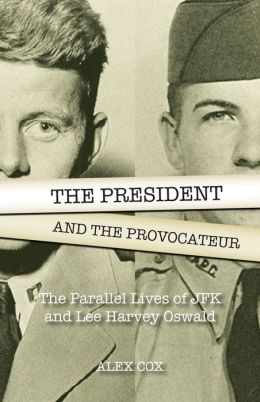 Accompanied by friends, Wynn Chamberlain pushing his 2-month-old twins, Sara and Sam, to a Central Park picnic in May 1968. His film “Brand X” will be screened Saturday at the New Museum.
Accompanied by friends, Wynn Chamberlain pushing his 2-month-old twins, Sara and Sam, to a Central Park picnic in May 1968. His film “Brand X” will be screened Saturday at the New Museum. In the 1960s, the Pop artist Wynn Chamberlain often toyed with making a movie and spent time visiting various avant-garde filmmakers on their sets. In 1963 he bought 10 rolls of 16-millimeter film, only to come across Andy Warhol using them, on a visit to Mr. Chamberlain’s country house, to shoot the poet John Giorno sleeping for the early “anti-film” “Sleep.”
When Mr. Chamberlain finally did make a film, “Brand X,” in 1969, it did not turn out to be the sort of hard-to-penetrate work that friends like Mr. Warhol had been creating.
“We thought we were making an art film,” Mr. Chamberlain, now 83 and based in Morocco, said in an interview recently. But eventually “we realized that it was a populist film.” A satirical take on television, with fake programs and commercials, “Brand X” anticipated TV and movie comedies of the next decade like “Saturday Night Live,” “SCTV” and “The Kentucky Fried Movie,” though in a more absurdist vein and with a more political view.
The film, which featured Abbie Hoffman, Sam Shepard, Sally Kirkland and the Warhol superstars Ultra Violet, Candy Darling and Taylor Mead, was released in 1970 in New York, Washington and Los Angeles. Vincent Canby endorsed it in The New York Times as “a tacky, vulgar, dirty, sometimes dull, often hilarious movie” with the tone of “a liberated college humor magazine.”
After that initial run, it turned up for a while on college campuses, and then it vanished, never to be screened again or released on video. Even Mr. Chamberlain did not have a copy. He believes it was the victim of a Nixonian conspiracy to suppress its countercultural message; New Line Cinema, its on-campus distributor, says the company simply moved on from underground film. In any case, “Brand X” gained a reputation as a lost relic of its era — something many underground film fanatics have read about but few if any have actually seen.
But now Mr. Chamberlain, who reclaimed a print of the film from New Line in 2007, has brought it to New York, and on Saturday afternoon it will be screened for the first time in nearly 40 years, at the New Museum on the Bowery (newmuseum.org). A panel discussion will follow.
“To finally see a film like that is very exciting,” said Jed Rapfogel, the film programmer at Anthology Film Archives in the East Village. “It fills in a kind of gap.”
“Brand X” was born on a snowy weekend in early 1969 in Staatsburg, N.Y., where Mr. Chamberlain and his wife, Sally, had a weekend cottage.
“We couldn’t get out; the only thing to do was watch television,” Mrs. Chamberlain recalled during an interview at the Upper East Side apartment that the couple is borrowing during theirNew York stay. “We hadn’t watched much daytime television, and Wynn was immediately struck by its banality and superficiality.”
Mr. Chamberlain was by then an established Pop-realist painter and a fixture in the New York art scene, with work in the Whitney Museum of American Art and what is now the Smithsonian American Art Museum and a social set that included Allen Ginsberg, Frank O’Hara and John Cage as well as Warhol and the Factory denizens. He was also, like most of his friends, enamored of the counterculture and dismayed by the conservatism of mainstream culture, as embodied by the television he watched that day.
He wrote a script, cast Mr. Mead as his lead and cobbled together $10,000 from supporters. Much of the rest of the cast came together “sort of by osmosis,” Mr. Mead, now 86, said in a telephone interview. “There were just 100 of us downtown hanging out at Max’s Kansas City,” he said, “and we melded.”
The 87-minute film that resulted follows the on- and off-air shenanigans of Mr. Mead’s Wally Right, the manic head of a television station. It takes on President Nixon, the Vietnam War, sex, drugs, technology and advertising, alternating between vignettes riffing on TV programming — an exercise show, a soap opera, a financial report — and Dadaist commercials like one for “Food,” in which the film’s cinematographer, John Harnish, is seen sitting with a naked blond woman at a table covered with fruit.
“Eat more, think less,” he quips to the camera. Abbie Hoffman plays a corrupt cop who bathes in a tub full of money; Mr. Mead portrays an indignant American president holding a news conference; and Ultra Violet gives an off-key performance on “The Tomorrow Show.”
The film was shot over several months in the spring and summer, in and around places where the Chamberlain family lived and worked: Bard College, where Mr. Chamberlain taught art history; the Staatsburg house; a loft in the Bowery building where Mr. Chamberlain kept a studio. The process, according to Mr. Chamberlain, was “always chaos.”
“It wasn’t like nowadays when you have a project, and it’s all orderly,” he said. “We worked as far away from Hollywood ideas as possible.” There were frequent delays, he added, as when shooting at Bard was held up because students and members of the cast “were all having a big orgy in the kitchen.”
“Brand X” had its debut at the Elgin Theater on Eighth Avenue (now the Joyce) in 1970, to throngs of appreciative downtowners.
“These sort of potpourri parodies were very popular among the underground set,” said Robert Shaye, who founded New Line Cinema in 1967, at 27. “‘Brand X’ was a parody that kids responded to — that I responded to; I was a kid too.”
Mr. Chamberlain signed a distribution deal with Mr. Shaye after the initial run, and “Brand X” went on to tour several college campuses. When Mr. Shaye’s rights to the film expired a few years later, he insists, a print was sent to Mr. Chamberlain.
Mr. Chamberlain says he never got it, and even goes so far as to speculate that a wider conspiracy kept him from his movie: The Nixon administration “certainly didn’t want this film out there,” he said. “The American government does not like to be laughed at. No governments do.”
The artist moved on, too. In 1971 he took his family to Madras, India, where he more or less gave up painting and wrote the first of several novels, “Gates of Fire.” The family returned to the United States in 1975 and built a home 200 miles north of San Francisco, where they grew their own food and their twin son and daughter were home-schooled. “I wanted my children away from television,” Mr. Chamberlain said.
“We didn’t have a lot of time to concentrate on ‘Brand X,’ ” Mrs. Chamberlain added. “But from time to time Wynn would write to New Line. We never could get an answer.”
In 1983 the family went back to India, and Mr. and Mrs. Chamberlain moved to Marrakesh in 1997. Then a few years back an acquaintance suggested that they try again to retrieve “Brand X,” and this time they were successful.
Mr. Chamberlain said he was now eager to have the film remastered and is looking into holding more screenings. In the meantime, he is fiercely protective of his one print; as of Friday, not even staff members at the New Museum had been given a chance to watch it.
Perched right across the Bowery from the loft building where much of “Brand X” was shot, the New Museum was a natural choice for the film’s 21st-century premiere. “It’s an opportunity to look at the neighborhood — how it was,” said the screening’s organizer, Ethan Swan, who manages Bowery Artists Tribute, the museum’s ever-growing archive of information about the artists who, like Mr. Chamberlain, lived and worked in the area.
“There was this creative richness that came from a really interesting combination of cheap rent and minimal police presence,” Mr. Swan said. “There was nobody saying, ‘You can’t weld on the sidewalk,’ ‘You can’t live in a loft.’ It allowed for so much to happen.”
http://www.nytimes.com/2011/04/09/arts/ ... &emc=tha28 Walker is a 1987 Acid Western film directed by Alex Cox. The film based on the life story of William Walker (played by Ed Harris), the American filibuster who invaded Mexico in the 1850s and made himself President of Nicaragua shortly thereafter. It was written by Rudy Wurlitzer and scored by Joe Strummer, who also plays a small role as a member of Walker's army. The film, released in 1987 and which by the end is intentionally full of anachronisms such as helicopters, Zippo lighters, automatic rifles, and a car passing a horse carriage, was made in Nicaragua during the American-sponsored Contra War.
Walker is a 1987 Acid Western film directed by Alex Cox. The film based on the life story of William Walker (played by Ed Harris), the American filibuster who invaded Mexico in the 1850s and made himself President of Nicaragua shortly thereafter. It was written by Rudy Wurlitzer and scored by Joe Strummer, who also plays a small role as a member of Walker's army. The film, released in 1987 and which by the end is intentionally full of anachronisms such as helicopters, Zippo lighters, automatic rifles, and a car passing a horse carriage, was made in Nicaragua during the American-sponsored Contra War.









